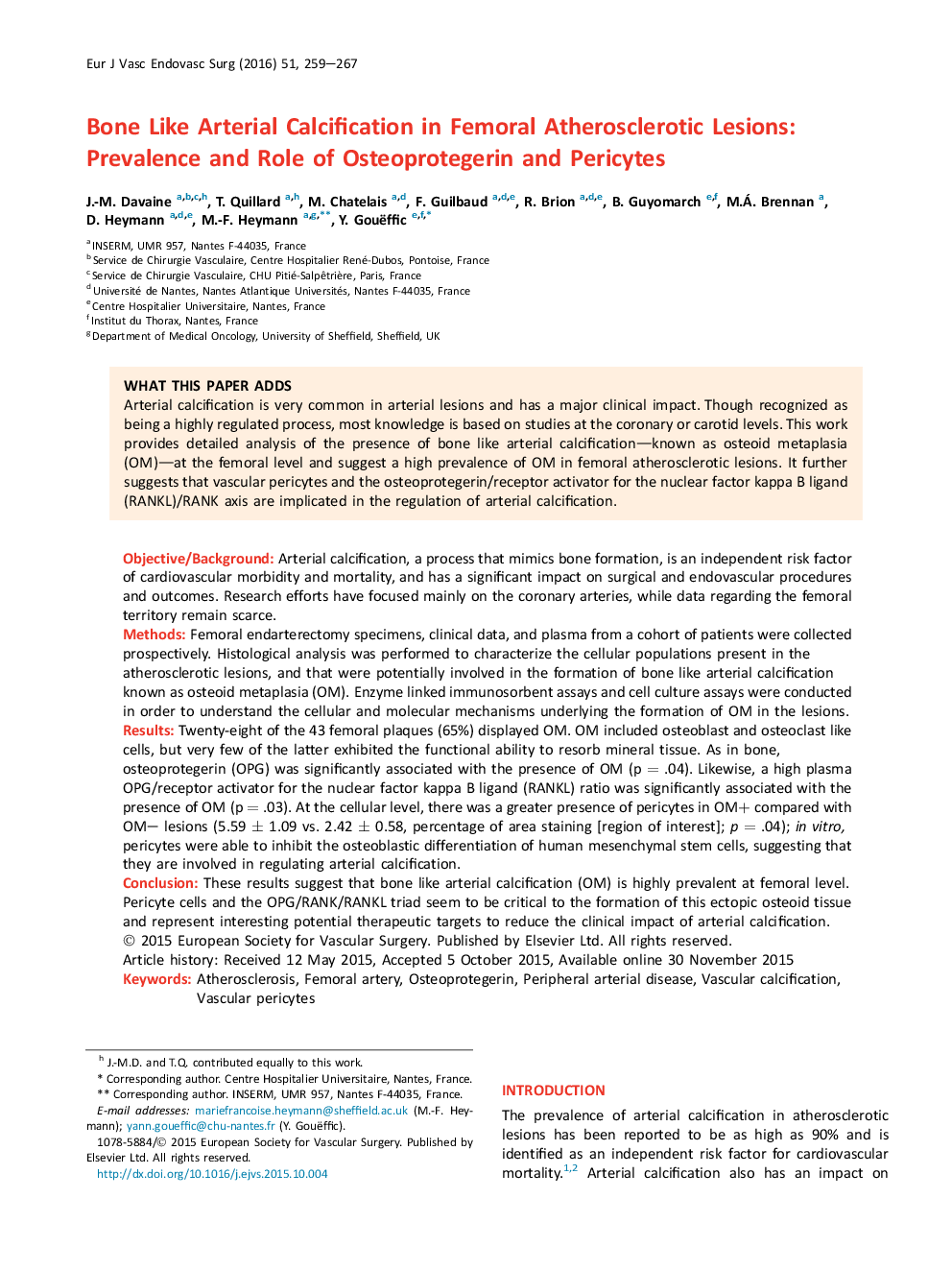| Article ID | Journal | Published Year | Pages | File Type |
|---|---|---|---|---|
| 2911719 | European Journal of Vascular and Endovascular Surgery | 2016 | 9 Pages |
Objective/BackgroundArterial calcification, a process that mimics bone formation, is an independent risk factor of cardiovascular morbidity and mortality, and has a significant impact on surgical and endovascular procedures and outcomes. Research efforts have focused mainly on the coronary arteries, while data regarding the femoral territory remain scarce.MethodsFemoral endarterectomy specimens, clinical data, and plasma from a cohort of patients were collected prospectively. Histological analysis was performed to characterize the cellular populations present in the atherosclerotic lesions, and that were potentially involved in the formation of bone like arterial calcification known as osteoid metaplasia (OM). Enzyme linked immunosorbent assays and cell culture assays were conducted in order to understand the cellular and molecular mechanisms underlying the formation of OM in the lesions.ResultsTwenty-eight of the 43 femoral plaques (65%) displayed OM. OM included osteoblast and osteoclast like cells, but very few of the latter exhibited the functional ability to resorb mineral tissue. As in bone, osteoprotegerin (OPG) was significantly associated with the presence of OM (p = .04). Likewise, a high plasma OPG/receptor activator for the nuclear factor kappa B ligand (RANKL) ratio was significantly associated with the presence of OM (p = .03). At the cellular level, there was a greater presence of pericytes in OM+ compared with OM– lesions (5.59 ± 1.09 vs. 2.42 ± 0.58, percentage of area staining [region of interest]; p = .04); in vitro, pericytes were able to inhibit the osteoblastic differentiation of human mesenchymal stem cells, suggesting that they are involved in regulating arterial calcification.ConclusionThese results suggest that bone like arterial calcification (OM) is highly prevalent at femoral level. Pericyte cells and the OPG/RANK/RANKL triad seem to be critical to the formation of this ectopic osteoid tissue and represent interesting potential therapeutic targets to reduce the clinical impact of arterial calcification.
